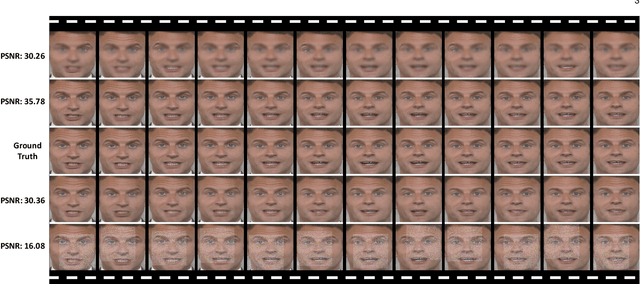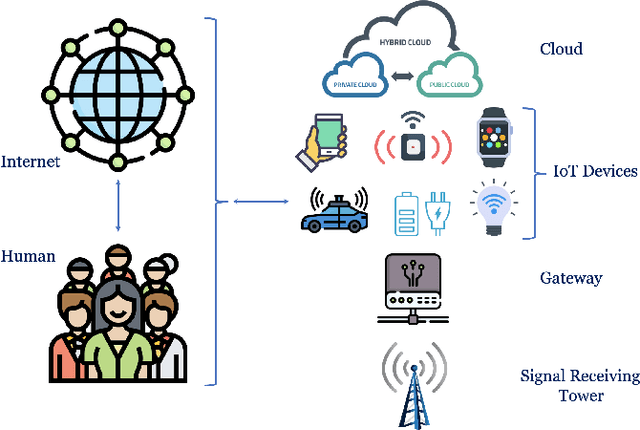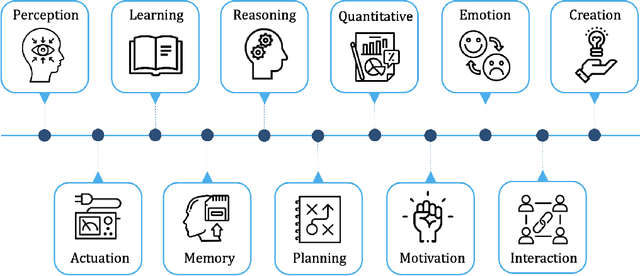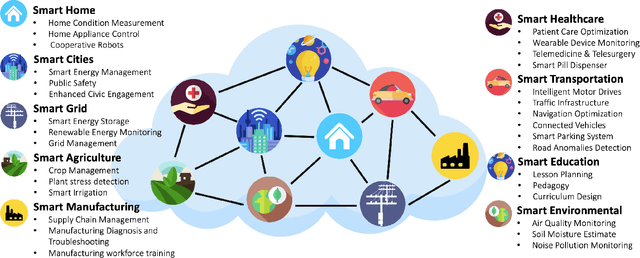Guoming Li
Rethinking the Potential of Layer Freezing for Efficient DNN Training
Aug 20, 2025Abstract:With the growing size of deep neural networks and datasets, the computational costs of training have significantly increased. The layer-freezing technique has recently attracted great attention as a promising method to effectively reduce the cost of network training. However, in traditional layer-freezing methods, frozen layers are still required for forward propagation to generate feature maps for unfrozen layers, limiting the reduction of computation costs. To overcome this, prior works proposed a hypothetical solution, which caches feature maps from frozen layers as a new dataset, allowing later layers to train directly on stored feature maps. While this approach appears to be straightforward, it presents several major challenges that are severely overlooked by prior literature, such as how to effectively apply augmentations to feature maps and the substantial storage overhead introduced. If these overlooked challenges are not addressed, the performance of the caching method will be severely impacted and even make it infeasible. This paper is the first to comprehensively explore these challenges and provides a systematic solution. To improve training accuracy, we propose \textit{similarity-aware channel augmentation}, which caches channels with high augmentation sensitivity with a minimum additional storage cost. To mitigate storage overhead, we incorporate lossy data compression into layer freezing and design a \textit{progressive compression} strategy, which increases compression rates as more layers are frozen, effectively reducing storage costs. Finally, our solution achieves significant reductions in training cost while maintaining model accuracy, with a minor time overhead. Additionally, we conduct a comprehensive evaluation of freezing and compression strategies, providing insights into optimizing their application for efficient DNN training.
Partition-wise Graph Filtering: A Unified Perspective Through the Lens of Graph Coarsening
May 20, 2025Abstract:Filtering-based graph neural networks (GNNs) constitute a distinct class of GNNs that employ graph filters to handle graph-structured data, achieving notable success in various graph-related tasks. Conventional methods adopt a graph-wise filtering paradigm, imposing a uniform filter across all nodes, yet recent findings suggest that this rigid paradigm struggles with heterophilic graphs. To overcome this, recent works have introduced node-wise filtering, which assigns distinct filters to individual nodes, offering enhanced adaptability. However, a fundamental gap remains: a comprehensive framework unifying these two strategies is still absent, limiting theoretical insights into the filtering paradigms. Moreover, through the lens of Contextual Stochastic Block Model, we reveal that a synthesis of graph-wise and node-wise filtering provides a sufficient solution for classification on graphs exhibiting both homophily and heterophily, suggesting the risk of excessive parameterization and potential overfitting with node-wise filtering. To address the limitations, this paper introduces Coarsening-guided Partition-wise Filtering (CPF). CPF innovates by performing filtering on node partitions. The method begins with structure-aware partition-wise filtering, which filters node partitions obtained via graph coarsening algorithms, and then performs feature-aware partition-wise filtering, refining node embeddings via filtering on clusters produced by $k$-means clustering over features. In-depth analysis is conducted for each phase of CPF, showing its superiority over other paradigms. Finally, benchmark node classification experiments, along with a real-world graph anomaly detection application, validate CPF's efficacy and practical utility.
ERGNN: Spectral Graph Neural Network with Explicitly-optimized Rational Graph Filters
Dec 26, 2024



Abstract:Approximation-based spectral graph neural networks, which construct graph filters with function approximation, have shown substantial performance in graph learning tasks. Despite their great success, existing works primarily employ polynomial approximation to construct the filters, whereas another superior option, namely ration approximation, remains underexplored. Although a handful of prior works have attempted to deploy the rational approximation, their implementations often involve intensive computational demands or still resort to polynomial approximations, hindering full potential of the rational graph filters. To address the issues, this paper introduces ERGNN, a novel spectral GNN with explicitly-optimized rational filter. ERGNN adopts a unique two-step framework that sequentially applies the numerator filter and the denominator filter to the input signals, thus streamlining the model paradigm while enabling explicit optimization of both numerator and denominator of the rational filter. Extensive experiments validate the superiority of ERGNN over state-of-the-art methods, establishing it as a practical solution for deploying rational-based GNNs.
LaDTalk: Latent Denoising for Synthesizing Talking Head Videos with High Frequency Details
Oct 01, 2024



Abstract:Audio-driven talking head generation is a pivotal area within film-making and Virtual Reality. Although existing methods have made significant strides following the end-to-end paradigm, they still encounter challenges in producing videos with high-frequency details due to their limited expressivity in this domain. This limitation has prompted us to explore an effective post-processing approach to synthesize photo-realistic talking head videos. Specifically, we employ a pretrained Wav2Lip model as our foundation model, leveraging its robust audio-lip alignment capabilities. Drawing on the theory of Lipschitz Continuity, we have theoretically established the noise robustness of Vector Quantised Auto Encoders (VQAEs). Our experiments further demonstrate that the high-frequency texture deficiency of the foundation model can be temporally consistently recovered by the Space-Optimised Vector Quantised Auto Encoder (SOVQAE) we introduced, thereby facilitating the creation of realistic talking head videos. We conduct experiments on both the conventional dataset and the High-Frequency TalKing head (HFTK) dataset that we curated. The results indicate that our method, LaDTalk, achieves new state-of-the-art video quality and out-of-domain lip synchronization performance.
MLPHand: Real Time Multi-View 3D Hand Mesh Reconstruction via MLP Modeling
Jun 23, 2024



Abstract:Multi-view hand mesh reconstruction is a critical task for applications in virtual reality and human-computer interaction, but it remains a formidable challenge. Although existing multi-view hand reconstruction methods achieve remarkable accuracy, they typically come with an intensive computational burden that hinders real-time inference. To this end, we propose MLPHand, a novel method designed for real-time multi-view single hand reconstruction. MLP Hand consists of two primary modules: (1) a lightweight MLP-based Skeleton2Mesh model that efficiently recovers hand meshes from hand skeletons, and (2) a multi-view geometry feature fusion prediction module that enhances the Skeleton2Mesh model with detailed geometric information from multiple views. Experiments on three widely used datasets demonstrate that MLPHand can reduce computational complexity by 90% while achieving comparable reconstruction accuracy to existing state-of-the-art baselines.
Elevating Spectral GNNs through Enhanced Band-pass Filter Approximation
Apr 15, 2024Abstract:Spectral Graph Neural Networks (GNNs) have attracted great attention due to their capacity to capture patterns in the frequency domains with essential graph filters. Polynomial-based ones (namely poly-GNNs), which approximately construct graph filters with conventional or rational polynomials, are routinely adopted in practice for their substantial performances on graph learning tasks. However, previous poly-GNNs aim at achieving overall lower approximation error on different types of filters, e.g., low-pass and high-pass, but ignore a key question: \textit{which type of filter warrants greater attention for poly-GNNs?} In this paper, we first show that poly-GNN with a better approximation for band-pass graph filters performs better on graph learning tasks. This insight further sheds light on critical issues of existing poly-GNNs, i.e., those poly-GNNs achieve trivial performance in approximating band-pass graph filters, hindering the great potential of poly-GNNs. To tackle the issues, we propose a novel poly-GNN named TrigoNet. TrigoNet constructs different graph filters with novel trigonometric polynomial, and achieves leading performance in approximating band-pass graph filters against other polynomials. By applying Taylor expansion and deserting nonlinearity, TrigoNet achieves noticeable efficiency among baselines. Extensive experiments show the advantages of TrigoNet in both accuracy performances and efficiency.
Spectral GNN via Two-dimensional (2-D) Graph Convolution
Apr 06, 2024Abstract:Spectral Graph Neural Networks (GNNs) have achieved tremendous success in graph learning. As an essential part of spectral GNNs, spectral graph convolution extracts crucial frequency information in graph data, leading to superior performance of spectral GNNs in downstream tasks. However, in this paper, we show that existing spectral GNNs remain critical drawbacks in performing the spectral graph convolution. Specifically, considering the spectral graph convolution as a construction operation towards target output, we prove that existing popular convolution paradigms cannot construct the target output with mild conditions on input graph signals, causing spectral GNNs to fall into suboptimal solutions. To address the issues, we rethink the spectral graph convolution from a more general two-dimensional (2-D) signal convolution perspective and propose a new convolution paradigm, named 2-D graph convolution. We prove that 2-D graph convolution unifies existing graph convolution paradigms, and is capable to construct arbitrary target output. Based on the proposed 2-D graph convolution, we further propose ChebNet2D, an efficient and effective GNN implementation of 2-D graph convolution through applying Chebyshev interpolation. Extensive experiments on benchmark datasets demonstrate both effectiveness and efficiency of the ChebNet2D.
Towards Artificial General Intelligence (AGI) in the Internet of Things (IoT): Opportunities and Challenges
Sep 14, 2023


Abstract:Artificial General Intelligence (AGI), possessing the capacity to comprehend, learn, and execute tasks with human cognitive abilities, engenders significant anticipation and intrigue across scientific, commercial, and societal arenas. This fascination extends particularly to the Internet of Things (IoT), a landscape characterized by the interconnection of countless devices, sensors, and systems, collectively gathering and sharing data to enable intelligent decision-making and automation. This research embarks on an exploration of the opportunities and challenges towards achieving AGI in the context of the IoT. Specifically, it starts by outlining the fundamental principles of IoT and the critical role of Artificial Intelligence (AI) in IoT systems. Subsequently, it delves into AGI fundamentals, culminating in the formulation of a conceptual framework for AGI's seamless integration within IoT. The application spectrum for AGI-infused IoT is broad, encompassing domains ranging from smart grids, residential environments, manufacturing, and transportation to environmental monitoring, agriculture, healthcare, and education. However, adapting AGI to resource-constrained IoT settings necessitates dedicated research efforts. Furthermore, the paper addresses constraints imposed by limited computing resources, intricacies associated with large-scale IoT communication, as well as the critical concerns pertaining to security and privacy.
 Add to Chrome
Add to Chrome Add to Firefox
Add to Firefox Add to Edge
Add to Edge